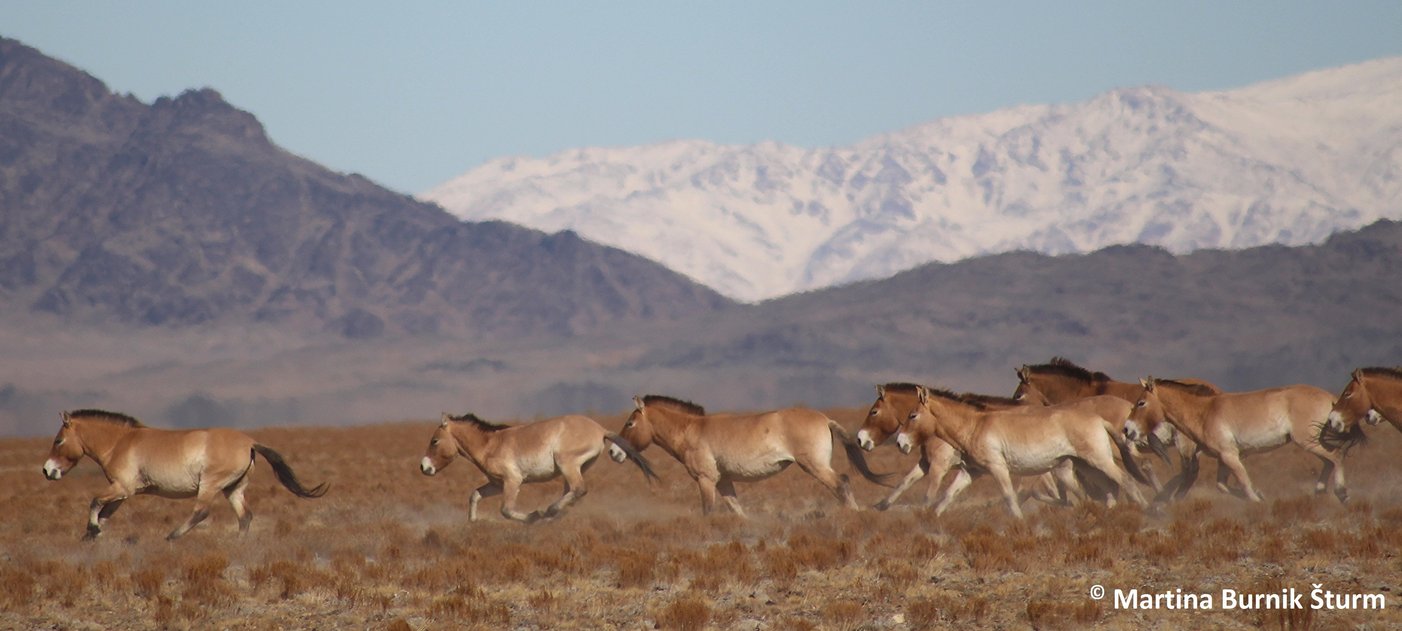- Research Institute of Wildlife Ecology /
- Research /
- Conservation medicine /
- Investigating the genetic diversity of reintroduced Przewalski´s horses in the Great Gobi B Projected Area to assess the extent of hybridisation with domestic horses
Investigating the genetic diversity of the reintroduced Przewalski's horse population in the Great Gobi B Conservation Area and the extent of hybridization with domestic horses
Project leadership Petra Kaczensky
the interaction with domestic horses has been identified as one of the main threats to the reintroduction of the Przewalski's horse (Takhi; Equus ferus przewalskii). Both species are closely related, so that hybridization or the transmission of diseases can occur, which can endanger the continued existence of the takhi as an independent species. Countermeasures include minimizing contact between the two equine species, educating decision-makers and local communities on domestic-wild horse interactions, and building expertise and laboratory capacity to genetically monitor reintroduced takhi populations.
In the Great Gobi B, a strictly protected area in southwestern Mongolia, contact between takhi and domestic horses is mainly limited to autumn, winter, and spring; this falls outside the mating season. However, young takhi stallions roam widely, and adult mares occasionally slip away during mating season to mate with a stallions other than the harem stallion. The prevention of hybridization and the genetic monitoring of the reintroduced Takhi population using non-invasive sampling (i.e. without the need for direct animal contact) was identified as a management and research priority for the 2019-2023 Management Plan of the Great Gobi B. A genetic inventory of the remaining takhis (genetic screening) of the current population is therefore an important first step to get a set of reference values and to assess the urgency of intervening (e.g. to increase genetic variability or to avoid hybridization). A comparison of the population genetic parameters of the takhi and domestic horse populations in the Great Gobi B Conservation Area also provides a first insight into where the adaptive differences in the genome between takhis and domestic horses are to be found.
Duration 01.07.2019-31.03.2023
Participating Vetmeduni Institutes
Forschungsinstitut für Wildtierkunde und Ökologie, Conservation Medicine
Konrad Lorenz Institut für Vergleichende Verhaltensforschung
(Further) Project partners
Contact: Oyunsaikhan Ganbaatar
Great Gobi B Biosphere Reserve, Mongolia
Financial support by Jean-Pierre und Sonja Siegfried-Stiftung, Basel, Schweiz
